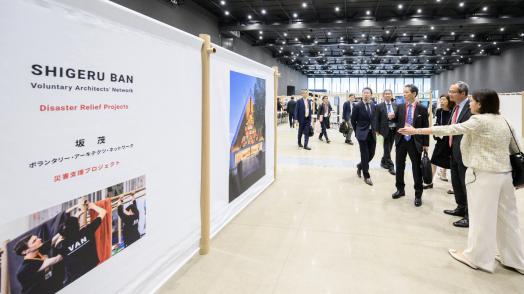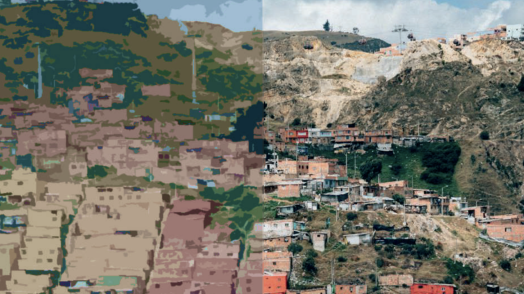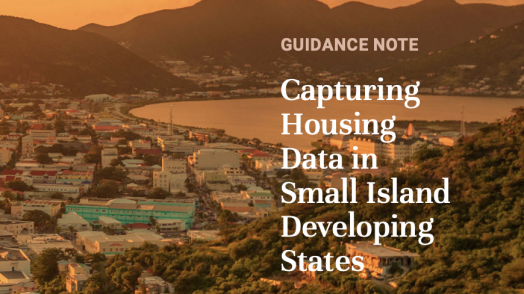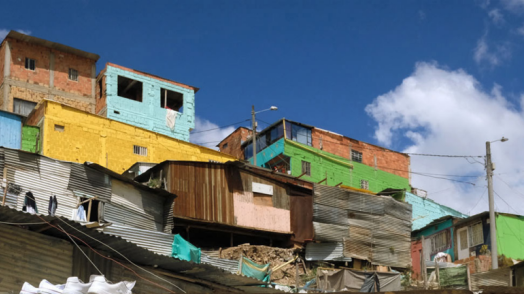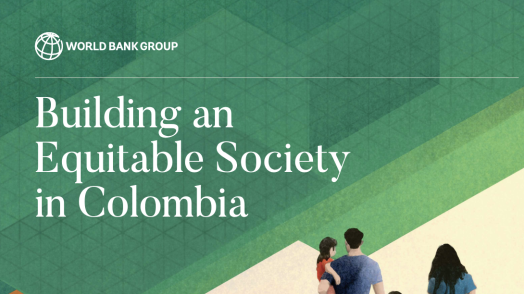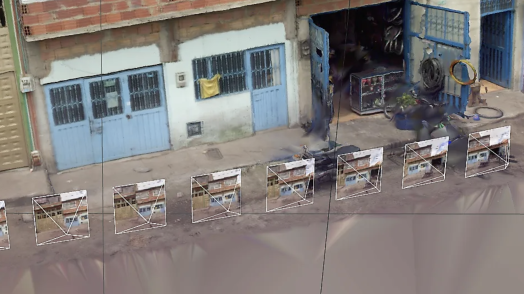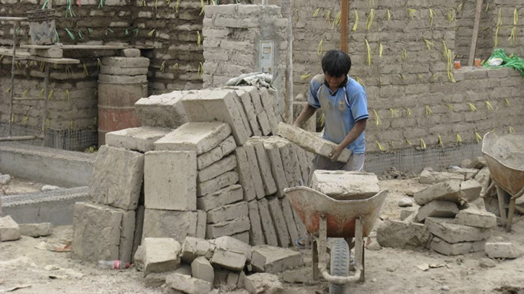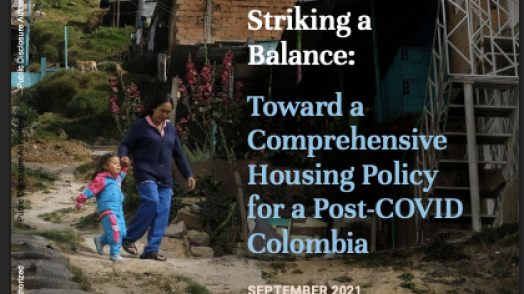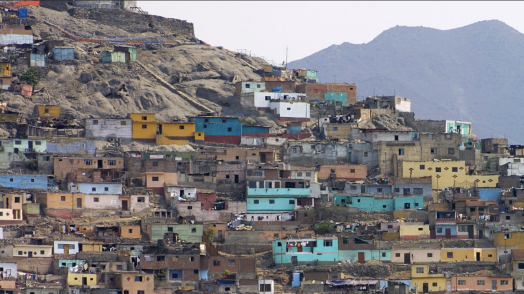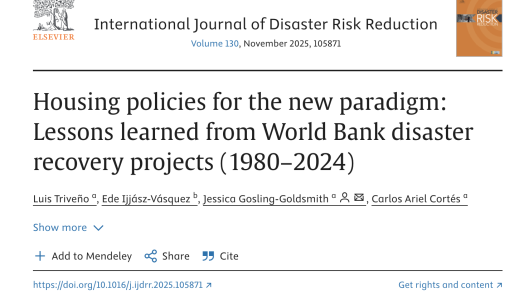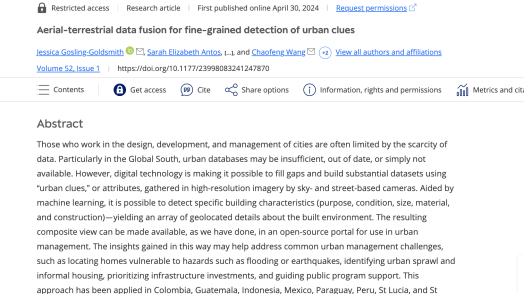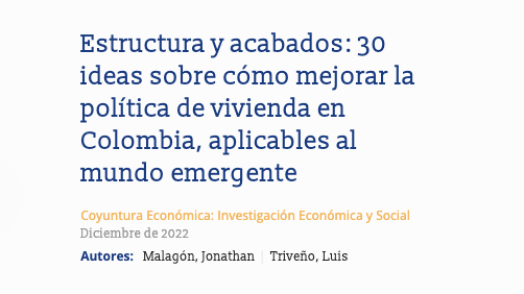The Resilient Housing thematic area focuses on promoting housing systems that are affordable, sustainable, and adaptive to both everyday needs and post-disaster recovery. This thematic area emphasizes the importance of integrating resilience into housing design, construction, policy frameworks, and market structures to ensure communities are better prepared to respond to natural hazards and climate impacts.
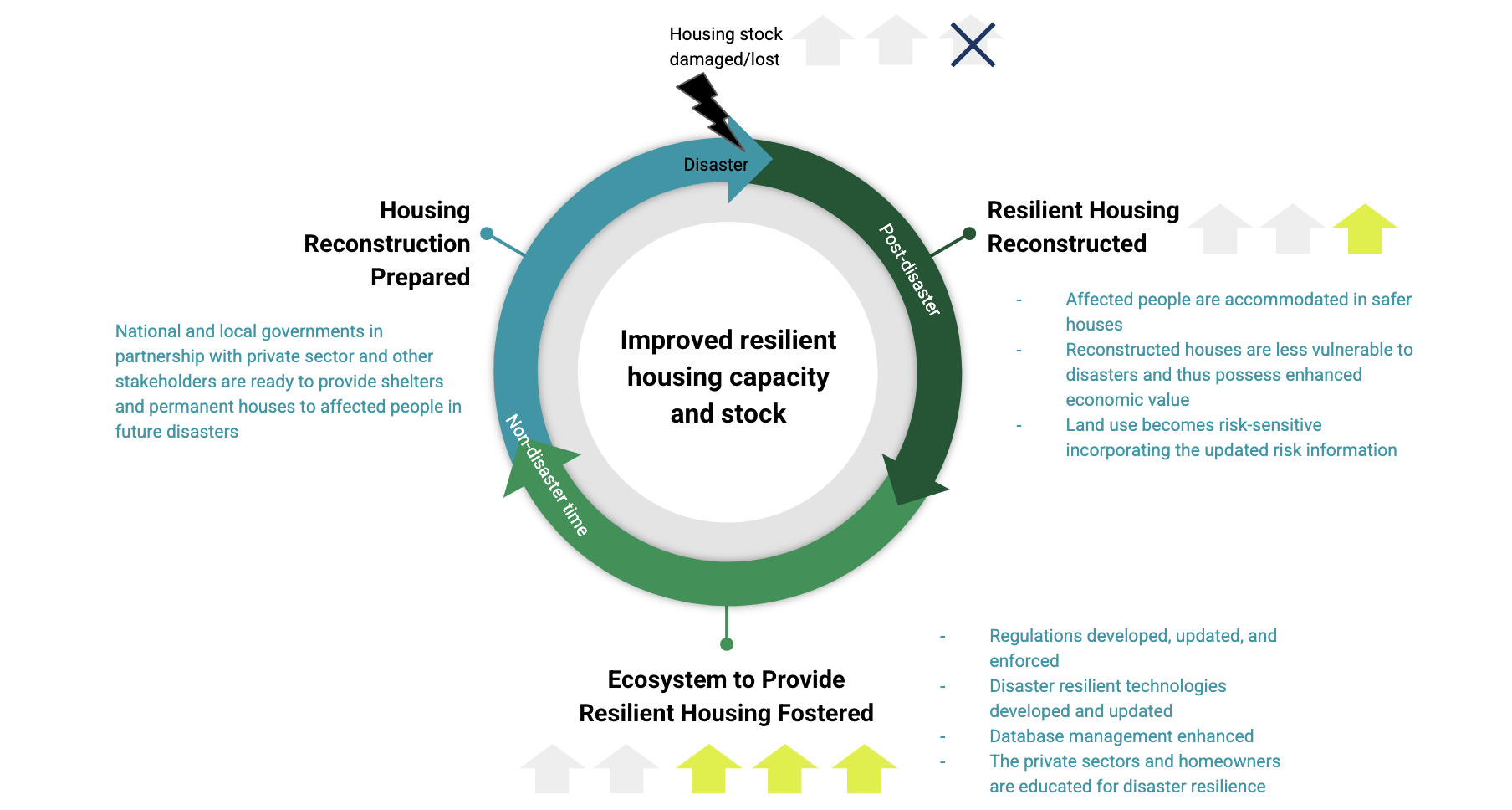
Why does disaster-resilient housing matter?
Housing is a cornerstone of human well-being and economic stability. It provides shelter, security, and a foundation for livelihoods, while also serving as a critical defense against natural hazards and climate-related risks. A World Bank review of 33 disaster recovery housing projects, totaling over $9.2 billion in investments in the last 40 years, reaffirmed previous findings: every dollar spent on resilient planning can generate jobs at a scale few other sectors match, and may save as much as $10 in reconstruction costs. When designed with resilience in mind, housing can protect lives, reduce economic losses, and support faster recovery after disasters. Beyond safety, resilient housing contributes to sustainability, inclusivity, and long-term adaptability to changing environmental and social conditions.
Key benefits:
Enhanced safety and resilience: Reduces vulnerability to disasters and chronic risks, ensuring families—and their communities—can withstand hazards like floods, earthquakes, and storms.
Post-disaster recovery: Facilitates faster reconstruction and rehabilitation, minimizing disruptions to communities and economies.
Adaptability and inclusivity: Ensures housing can evolve with changing needs, such as population growth, urbanization, or climate shifts. Supports universal access and equity, ensuring housing solutions are accessible to all, including marginalized and vulnerable populations.
Economic dividend: Promotes balanced territorial development and creates jobs where it is needed the most through home improvement or new housing investments.
Highlights
Services
GFDRR's Resilient Housing thematic area supports governments and communities with technical assistance, policy guidance, and capacity-building initiatives. It offers services such as: (i) diagnostic assessments to identify vulnerabilities and opportunities, (ii) recommendations for resilient housing policies and practices, and (iii) knowledge-sharing through global and regional resources.
GFDRR provides a comprehensive range of technical support and advisory services to help countries strengthen housing resilience, both during disasters and in times of stability. Our assessments are designed to identify opportunities for reducing disaster risk within the housing sector and to enhance preparedness for future housing reconstruction.
1. AI-supported Resilient Housing Snapshot (under development):
To bridge persistent gaps in resilience integration within housing diagnostics, GFDRR is developing the Resilient Housing Snapshot—a rapid, standardized tool that benchmarks a country’s resilient housing capacity. This innovative framework covers six key thematic areas:
- Housing Gap & Needs
- Land Provision & Regularization
- Standards & Technologies
- Institutional Setting, Policies, & Operational Rules
- Markets, Products, & Civil Society
- Public Financing & Private Capital Mobilization
Within each area, experts identify core topics and indicators essential for resilient housing. Each topic is assessed using a color-coded traffic light system: green for fully met indicators, yellow for partial progress, and red where major gaps remain. This approach provides a clear, comparative understanding of resilience readiness—highlighting strengths, pinpointing areas for improvement, and identifying where urgent reforms or capacity-building are needed.
2. Machine Learning Detection of Disaster Resilience to Inform the Targeting of Housing Retrofitting Efforts
Traditionally, identifying homes suitable for retrofitting was a time-consuming and costly process, requiring months of manual surveys. GFDRR now leverages cutting-edge technology—including car-mounted cameras, drones, laptops, and advanced algorithms—to rapidly assess building characteristics such as height, roof material, and façade details. This machine learning-based approach efficiently “scans” neighborhoods, creating detailed databases that help pinpoint high-risk homes and inform targeted retrofitting interventions. To learn more about this innovative method, please visit our blog: Resilient Housing Joins the Machine Learning Revolution.
3. Participatory Scenario-Based Housing Reconstruction Workshop
The Participatory Scenario-Based Housing Reconstruction Workshop, anchored by the Meguro-Maki visual planning instrument developed by Professor Kimiro Meguro of the University of Tokyo, is an innovative tool designed to foster "disaster imagination" among stakeholders. Through an interactive, visual exercise using a timeline scroll and color-coded sticky notes, participants collaboratively map out the entire lifecycle of housing reconstruction—from the immediate aftermath of a disaster to long-term resilience, spanning up to 8–10 years. This hands-on approach enables stakeholders to anticipate and simulate complex post-disaster decisions, proactively identify bottlenecks, refine strategies, and clarify institutional roles and responsibilities. The workshop not only facilitates the sharing of experiences and real-world decision-making simulations but also generates actionable policy recommendations, ultimately enhancing institutional capacity and operational readiness for effective post-disaster housing recovery.
GFDRR is dedicated to advancing global knowledge and capacity building to promote resilient housing worldwide. By sharing international experiences and best practices, we help countries strengthen their own strategies for housing resilience.
A notable example is the Resilient Housing Reconstruction Technical Knowledge Exchange in Japan. This initiative draws actionable insights from Japan’s extensive expertise in disaster risk management and housing recovery. While the primary focus is on post-disaster reconstruction, the exchange also explores broader capacity development and ecosystem strengthening for resilient housing. Countries can begin their resilience journey from various starting points—whether through reconstruction, regular capacity development, or preparedness. The greatest impact is achieved when societies foster a continuous cycle of housing improvement, as demonstrated by Japan.
To read more about this initiative, please visit: Resilient Housing Reconstruction Technical Knowledge Exchange in Japan.
Other Resources

Watch the Resilient Housing videos playlist on YouTube

